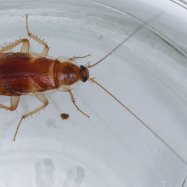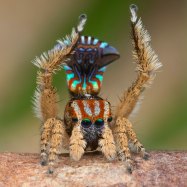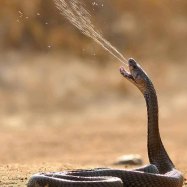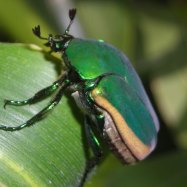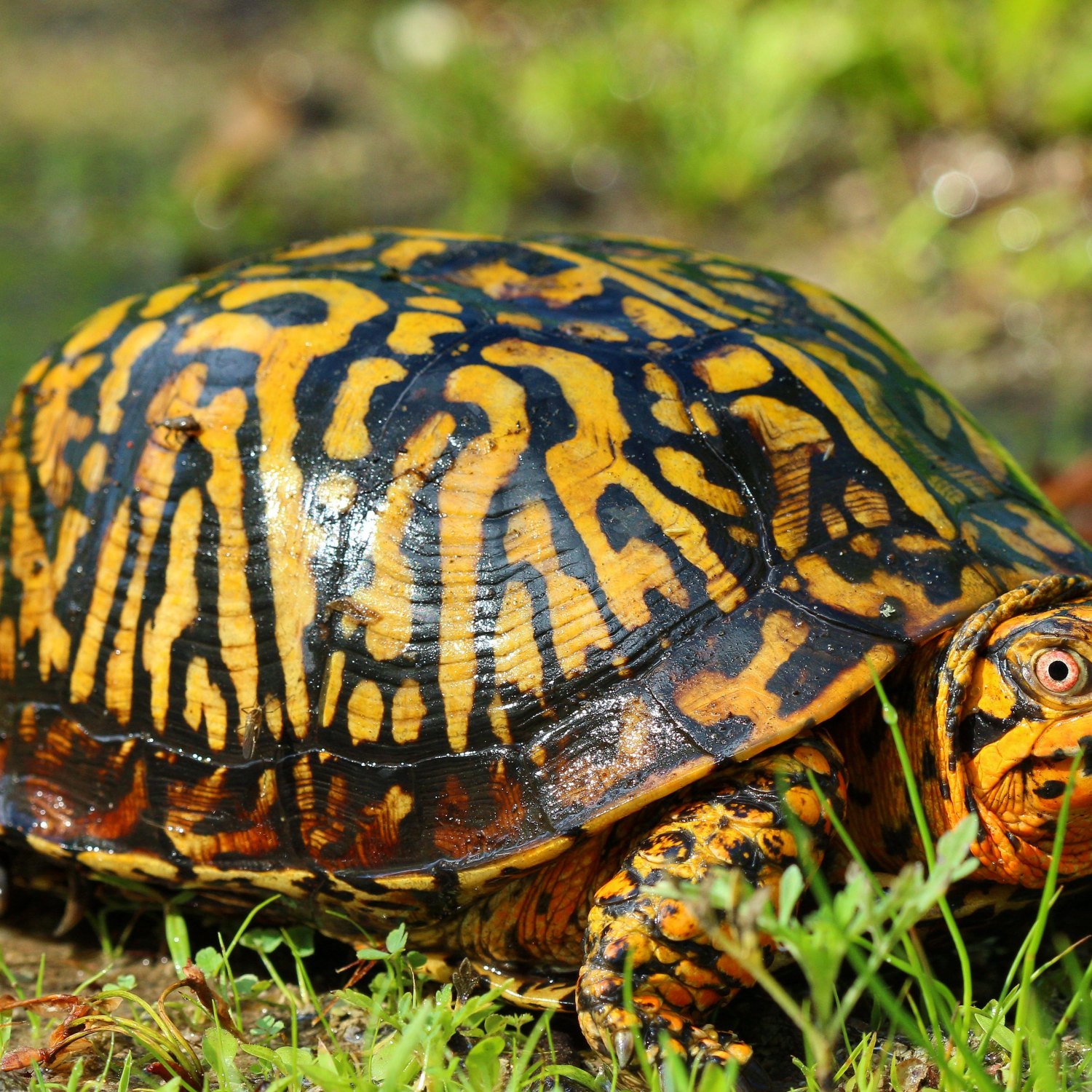
Eastern Box Turtle
4-8 inches
Meet the Eastern Box Turtle, a common sight in Eastern North America. This fascinating reptile boasts a low, domed shell and strong legs, making it a skilled climber and digger. With an average length of 4-8 inches, these turtles can be found in a variety of habitats. They belong to the Emydidae family and have a unique hinged plastron, allowing them to retract and protect their head and limbs. Keep an eye out for these impressive creatures on your next outdoor adventure! #EasternBoxTurtle #NorthAmericanAnimals #WildlifeEncounters
Animal Details Summary:
Common Name: Eastern Box Turtle
Kingdom: Animalia
Habitat: Forests, grasslands, and wetlands
The Fascinating World of the Eastern Box Turtle
The animal kingdom is full of diverse and fascinating creatures, each with its unique characteristics and adaptations. One such animal that is often overlooked but deserves recognition is the Eastern box turtle. With its distinctive domed shell and colorful markings, this reptile holds a fascinating story that is waiting to be discovered. So let's delve into the world of the Eastern box turtle and learn about its remarkable features, habitats, and behaviors Eastern Box Turtle.Meet the Eastern Box Turtle
The Eastern box turtle, scientifically known as Terrapene carolina carolina, is one of the six subspecies of box turtles found in North America. It is a member of the Emydidae family, which also includes the pond turtles, sliders, and terrapins. These turtles are commonly found in the eastern regions of the United States, primarily in forests, grasslands, and wetlands.Exploring Its Physical Characteristics
The Eastern box turtle has a boxy appearance, thanks to its unique shell. The shell, also known as the carapace, is usually dark brown or black in color, with yellow or orange markings. However, it should be noted that the carapace coloration can vary, making each turtle easily distinguishable. This variation in color serves as a protective mechanism against predators, as it helps them blend into their surroundings.Apart from its camouflaging coloration, the shell also plays a vital role in the turtle's defense. The domed, low-profile shell offers excellent protection against predators, allowing the turtle to retreat and close its hinged plastron, the bottom part of the shell, for maximum protection Elephant Bird.
Adapted for Survival
Eastern box turtles have a unique and fascinating feeding method – they are omnivorous, meaning they eat both plant and animal matter. In the wild, their diet mainly consists of insects, worms, berries, fruits, and leafy greens. However, in captivity, they can also be fed commercial turtle diets to ensure they receive a balanced and nutritious diet.Their varied feeding behavior is essential for their survival, especially in their natural habitat of forests, where food sources are plentiful but constantly changing. This adaptability allows them to thrive and survive in their ever-changing environment.
Unlocking the Secrets of the Eastern Box Turtle
To understand the Eastern box turtle, we must also take a closer look at its physical attributes and features. These turtles have strong legs, allowing them to move through dense vegetation with ease. They also have four toes on each front foot and only three on each hind foot, making it easier for them to dig and maneuver through different terrains.But what truly sets the Eastern box turtle apart from other turtle species is its ability to completely close its shell. This unique trait is known as being "box-tight," and it helps them protect themselves from predators. Furthermore, the turtle's plastron has a hinge that allows it to completely close off and provide extra protection. This adaptation also helps them survive harsh winters, as they can partially bury themselves in the ground with their shell closed off until spring.
Exploring Its Natural Habitat
The Eastern box turtle's natural habitat consists of a wide range of terrains, including forests, grasslands, and wetlands. They prefer moist, humid environments, making forests and wetlands ideal for their survival. These habitats provide shelter, food, and water, all essential for the turtle's well-being.They are also known to have a small home range, usually around 50 meters, making them highly territorial. This small home range is another adaptation that enables them to thrive in their environments. However, due to habitat destruction and fragmentation, their territories have become increasingly smaller, putting them at risk of extinction.
A Species in Decline
Despite their unique adaptations and survival traits, Eastern box turtles are facing a significant decline in their population. This decline is mainly due to habitat destruction, road mortality, and the illegal pet trade. With their small home ranges and slow movement, these turtles are highly vulnerable to roads and cars, which has led to a significant number of deaths.The illegal pet trade has also taken a toll on this species, with many people keeping them as pets without proper knowledge of their specialized care. This can lead to mistreatment and improper care, causing serious health issues for the turtles. Therefore, it is essential to educate the public about the importance of preserving this species and discourage keeping them as pets.
Conservation Efforts and Future Prospects
To protect and preserve this fascinating species, conservation efforts are underway. Organizations, such as the box turtle conservation program, are working towards educating the public, rehabilitating and releasing injured turtles, and implementing conservation measures to ensure their survival.One of the most critical steps towards conservation is preserving their natural habitats. This can be achieved by creating safe spaces for the turtles and implementing laws and regulations to protect their habitats from destruction and fragmentation.
In addition, it is crucial to educate the public on the importance of not keeping these turtles as pets. As they are slow-growing and long-lived, releasing captive-bred turtles into the wild could have a significant impact on the species' survival.
With conservation efforts in place, there is hope for the Eastern box turtle's future. The Eastern box turtle's unique characteristics and behaviors make it a fascinating and important species to study and conserve.
In Conclusion
The Eastern box turtle is more than just a reptile with a distinctive shell and colorful markings. It is a truly remarkable species, uniquely adapted to survive in its habitat of forests, grasslands, and wetlands. Its omnivorous feeding method, low domed shell, and strong legs are all essential for its survival in the ever-changing environment.However, despite its unique adaptations, the Eastern box turtle is facing a significant decline in its population. Habitat destruction, road mortality, and the illegal pet trade are all major threats to its survival. Therefore, it is crucial to take immediate action to preserve this species and ensure its future existence.
Conservation efforts are underway, and with proper education and conservation measures, there is hope for the Eastern box turtle's future. Let's do our part in preserving the fascinating world of the Eastern box turtle and ensure its rightful place in the animal kingdom.

Eastern Box Turtle
Animal Details Eastern Box Turtle - Scientific Name: Terrapene carolina carolina
- Category: Animals E
- Scientific Name: Terrapene carolina carolina
- Common Name: Eastern Box Turtle
- Kingdom: Animalia
- Phylum: Chordata
- Class: Reptilia
- Order: Testudines
- Family: Emydidae
- Habitat: Forests, grasslands, and wetlands
- Feeding Method: Omnivorous
- Geographical Distribution: Eastern United States
- Country of Origin: United States
- Location: Eastern North America
- Animal Coloration: Variable carapace coloration, usually dark brown or black with yellow or orange markings
- Body Shape: Low, domed shell; strong legs; hinged plastron
- Length: 4-8 inches

Eastern Box Turtle
- Adult Size: 4-8 inches
- Average Lifespan: 50+ years
- Reproduction: Sexual
- Reproductive Behavior: Breeding occurs in spring or fall; females lay 1-7 eggs
- Sound or Call: Hissing, grunting, and chirping
- Migration Pattern: No regular migration
- Social Groups: Solitary
- Behavior: Terrestrial and semi-aquatic; diurnal
- Threats: Habitat loss, road mortality, illegal collection
- Conservation Status: Vulnerable
- Impact on Ecosystem: Seed dispersal, insect control
- Human Use: Pet trade, traditional medicine
- Distinctive Features: Highly domed shell, hinged plastron
- Interesting Facts: Can live for more than 100 years in captivity
- Predator: Raccoons, skunks, and foxes

Terrapene carolina carolina
Eastern Box Turtle: An Ancient and Fascinating Creature
When we think of turtles, we often picture the large and slow-moving sea turtles or the colorful and energetic tortoises. But there is another type of turtle that often goes unnoticed and unappreciated – the Eastern Box Turtle.With its distinctive domed shell and hinged plastron, the Eastern Box Turtle is a truly unique and fascinating creature. Found in the eastern and central regions of the United States, these turtles have a variety of intriguing features and behaviors that make them a valuable part of their ecosystems PeaceOfAnimals.Com.
In this article, we will dive deeper into the world of the Eastern Box Turtle, exploring its physical characteristics, behaviors, threats, and conservation status. So, let's grab our magnifying glasses and take a closer look at this little-known but remarkable reptile.
Physical Characteristics
The Eastern Box Turtle, also known as the Common Box Turtle, is one of six species of box turtles found in North America. They can reach an adult size of 4-8 inches, making them relatively small compared to other turtle species.
One of the most distinctive features of the Eastern Box Turtle is its highly domed shell, which is one of its best defenses against predators. This shell is made up of two parts – the carapace (top) and the plastron (bottom). Unlike other turtles, the Eastern Box Turtle's plastron is hinged, allowing it to completely close itself inside the shell for protection.
The coloration of these turtles can vary but usually consists of dark brown or black markings on a yellow, orange, or brown background. This unique pattern helps them blend in with their surroundings, providing them with camouflage against predators Eider.
Behavior and Reproduction
Eastern Box Turtles are diurnal creatures, meaning they are most active during the day. They are also solitary, spending most of their lives alone except during the breeding season. Breeding of these turtles occurs in the spring or fall, and females can lay 1-7 eggs at a time.
The courtship and mating process of Eastern Box Turtles is a fascinating sight to behold. Male turtles will often engage in a slow-motion head-bobbing dance to attract females. If the female is receptive, the male will mount her, and they will remain still for several hours while mating takes place.
Once the eggs are laid, the female will bury them in a shallow nest and cover it with leaves or soil. The eggs will incubate for approximately 80 days, and the hatchlings will emerge in late summer or fall.
Threats and Conservation Status
Sadly, the Eastern Box Turtle faces numerous threats in the wild, making its future uncertain. Habitat loss due to deforestation and development is one of the biggest threats to these turtles. This species prefers to live in a variety of habitats, including forests, fields, and wetlands, but as these areas are destroyed, their populations decline.
Another major threat to the Eastern Box Turtle is road mortality. These turtles often cross roads to find new habitats or to lay their eggs, and many are struck and killed by vehicles. This threat is also compounded by their slow movement and the fact that they spend most of their time on land, making them vulnerable to cars.
The illegal collection of these turtles as pets or for traditional medicine is also a significant threat to their populations. Eastern Box Turtles are often taken from the wild and sold as pets, which can have devastating effects on their populations.
Due to these threats, the Eastern Box Turtle is listed as Vulnerable by the International Union for Conservation of Nature (IUCN). This designation signifies that their populations are declining and they are at risk of extinction.
Impact on Ecosystems
Eastern Box Turtles play a crucial role in their ecosystems, and their decline can have far-reaching consequences. As omnivores, these turtles feed on a variety of plants, fruits, insects, and small vertebrates. Their diet plays a crucial role in seed dispersal and insect control, helping to maintain the balance of their ecosystem.
In addition, Eastern Box Turtles are also a food source for many predators, such as raccoons, skunks, and foxes. As a result, their decline can have a ripple effect, impacting the food chain and potentially leading to imbalances in the ecosystem.
Human Use and Interesting Facts
Besides being threatened by human activities, Eastern Box Turtles have also been used by humans for various purposes. In traditional medicine, their body parts are believed to have healing properties, leading to their illegal collection.
In some states, Eastern Box Turtles are also used as pets, although this is not recommended due to their specific habitat and dietary needs. Interestingly, these turtles can live for more than 100 years in captivity, making them potential long-term companions for humans.
Predators of the Eastern Box Turtle
As mentioned earlier, the Eastern Box Turtle faces numerous threats from human activities and habitat loss. However, they also have predators in the wild that we should be aware of. Some of the most common predators of Eastern Box Turtles include raccoons, skunks, and foxes.
These predators pose a considerable threat to the survival of this species, especially as their populations continue to decline. So, it is essential to protect and preserve their habitats to ensure their survival and the balance of their ecosystems.
Final Thoughts
The Eastern Box Turtle may be small and often overlooked, but it is an essential and fascinating creature. With its unique physical characteristics, behaviors, and role in its ecosystem, it is clear that this species plays a vital role in its environment.
However, the Eastern Box Turtle is facing numerous threats, and its populations are declining. It is crucial to take action to protect and preserve their habitats and raise awareness about their importance in maintaining the balance of their ecosystems.
So, the next time you come across an Eastern Box Turtle, take a moment to appreciate its beauty and significance. Let us all work together to ensure that these ancient and fascinating creatures continue to thrive for generations to come.
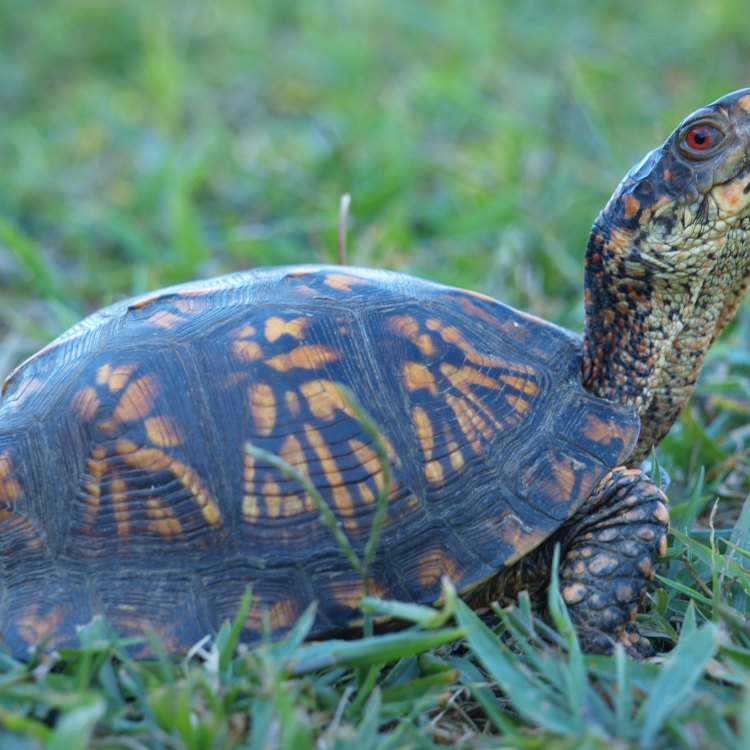
The Fascinating World of the Eastern Box Turtle
Disclaimer: The content provided is for informational purposes only. We cannot guarantee the accuracy of the information on this page 100%. All information provided here may change without prior notice.

